Shishi-Iwa House (SSH), which is nestled in a nature sanctuary in Karuizawa, Japan, brought together six top chefs for a private culinary retreat last fall. The objective? To gain some inspiration and explore their creativity in this tranquil, design-driven setting. Shishi-Iwa House is a collection of three architectural masterpieces designed by Pritzker Prize laureates Shigeru Ban and Ryue Nishizawa. The unique boutique hotel is about an hour’s train ride from Tokyo.
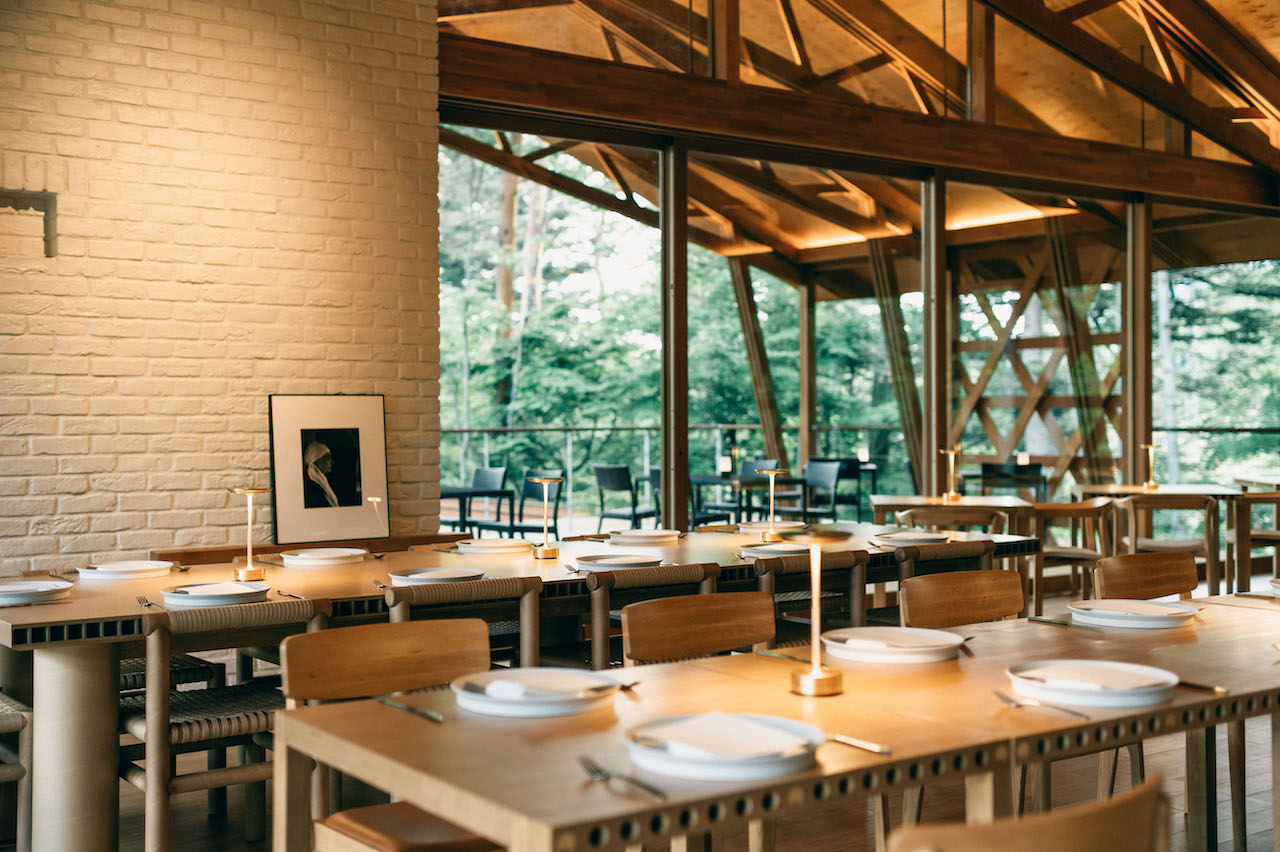
The chefs who were invited were Ricardo Chaneton of Mono, Hong Kong; Jordy Navarra of Toyo Eatery, Manila; Johanne Siy of Lolla, Singapore; Barry Quek of Whey, Hong Kong; and Coleman Griffin of Sower in Lake Biwa, Japan. Chef Masashi Okamoto of Shola (the restaurant at Shishi-Iwa House No.2), and the rest of the hotel’s dedicated team welcomed their international guests for this extraordinary experience. And what do chefs do when they get together? Cook and eat together of course.
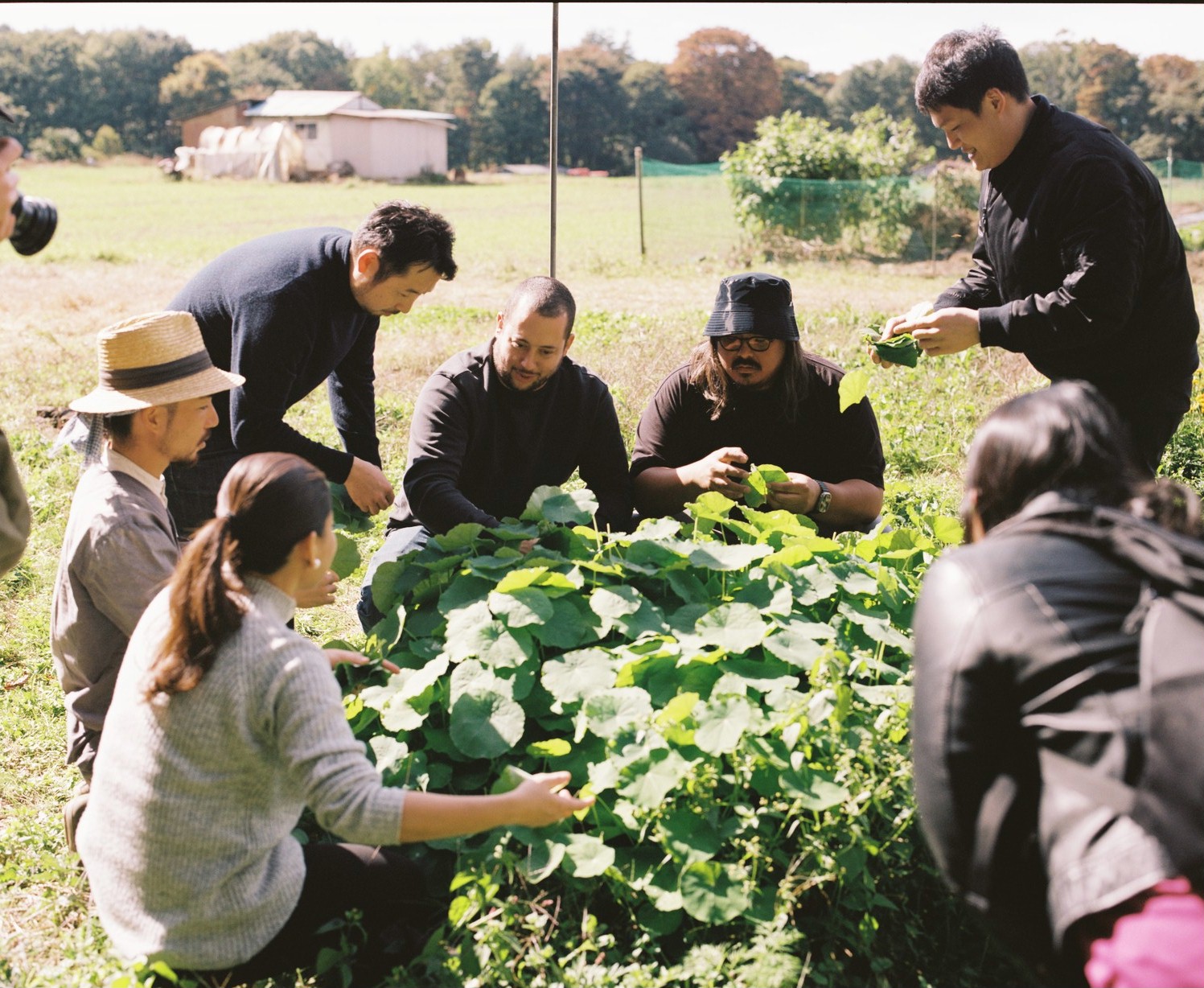
On the first day, the chefs visited Duca Farm, an organic farm to source for vegetables and herbs. Japanese farmer Yusuke Iizuka gave them a tour of his farm and harvested a range of root veggies, purslane, nasturtium leaves, and other produce for the chefs to lug back.
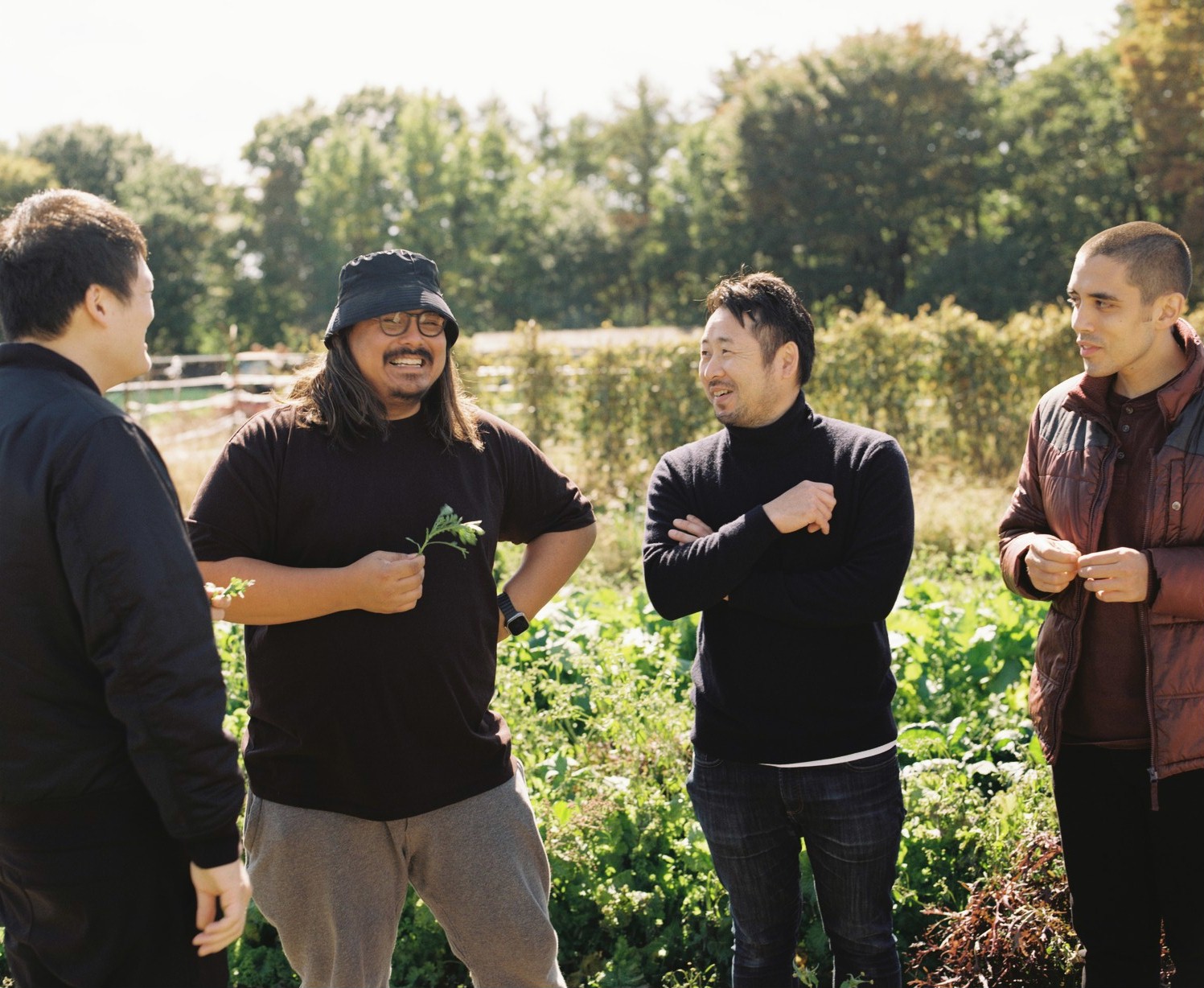
In the evening, the culinary experts congregated in the kitchen to experiment with their farm-fresh ingredients – in a rather spontaneous cook-out session. A small group of invited guests got to feast on their highly unique 12 hands menu.
Camaraderie in the kitchen
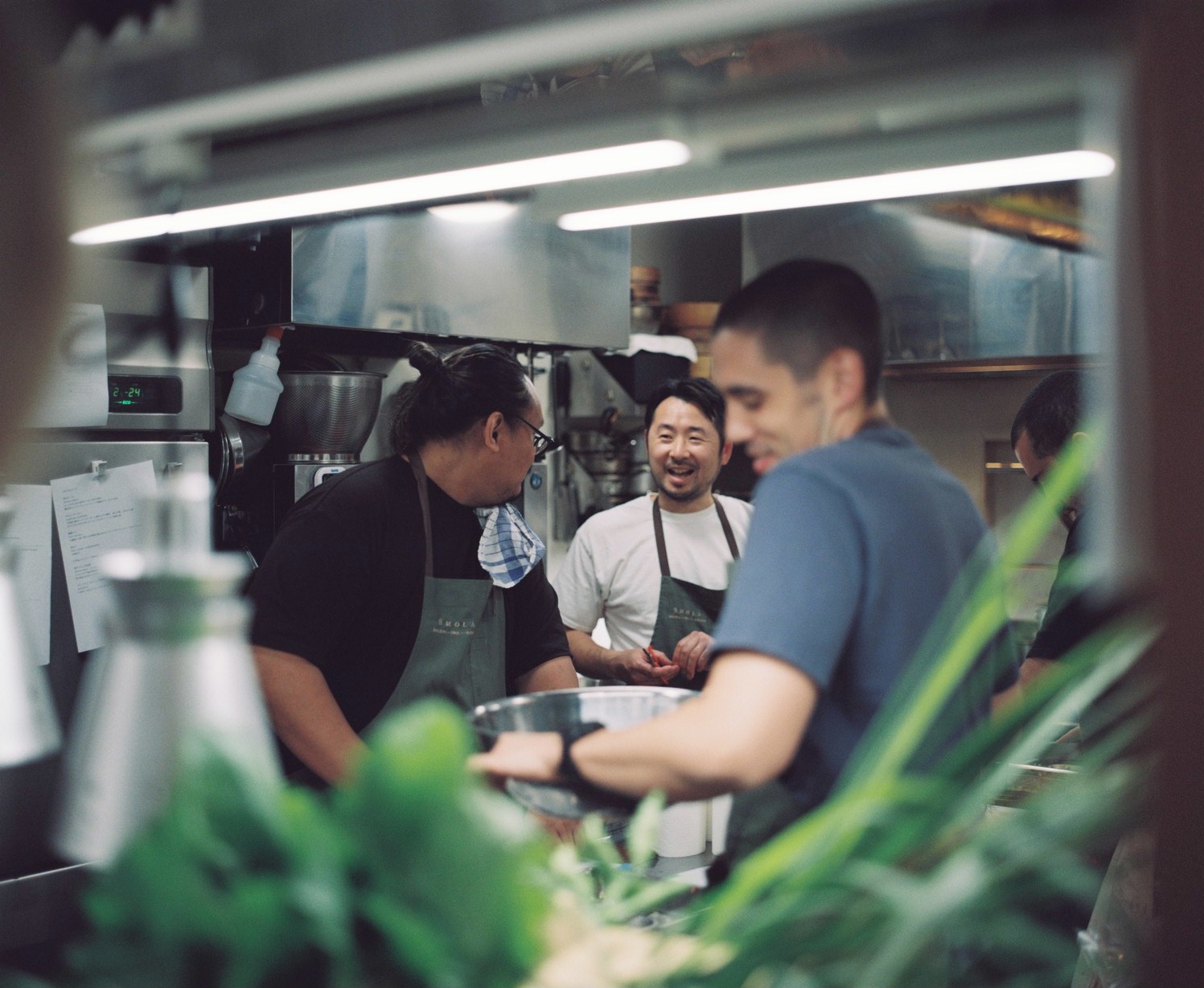
Johanne, one of Asia’s top female chefs, had a fantastic time visiting the farms and producers. “Everyone lived and breathed food and hospitality. I found it refreshing to be spending time with these wonderful people beyond the confines of a regular restaurant setting. It was inspiring because we were constantly surrounded by beauty – from nature, to the mindful design of the property and the sincerity of the people around us,” she said.
“From this trip, I was also able to work with ingredients I’ve never worked with before like hachinoko (bee larvae), wild walnuts and freshly unearthed kabu (a turnip variety) that was just bursting with sweet juice. Kabu for me, because of its sweetness, straddled the line between vegetable and fruit. So I wanted to serve it with other fruits to highlight that. At the end, we all decided to serve it fresh to preserve its integrity,” shared Johanne. She paired the vegetable with sweet strawberries and a ceviche of fresh trout from Nagano (similar to a dish called kinilaw in Philippines).
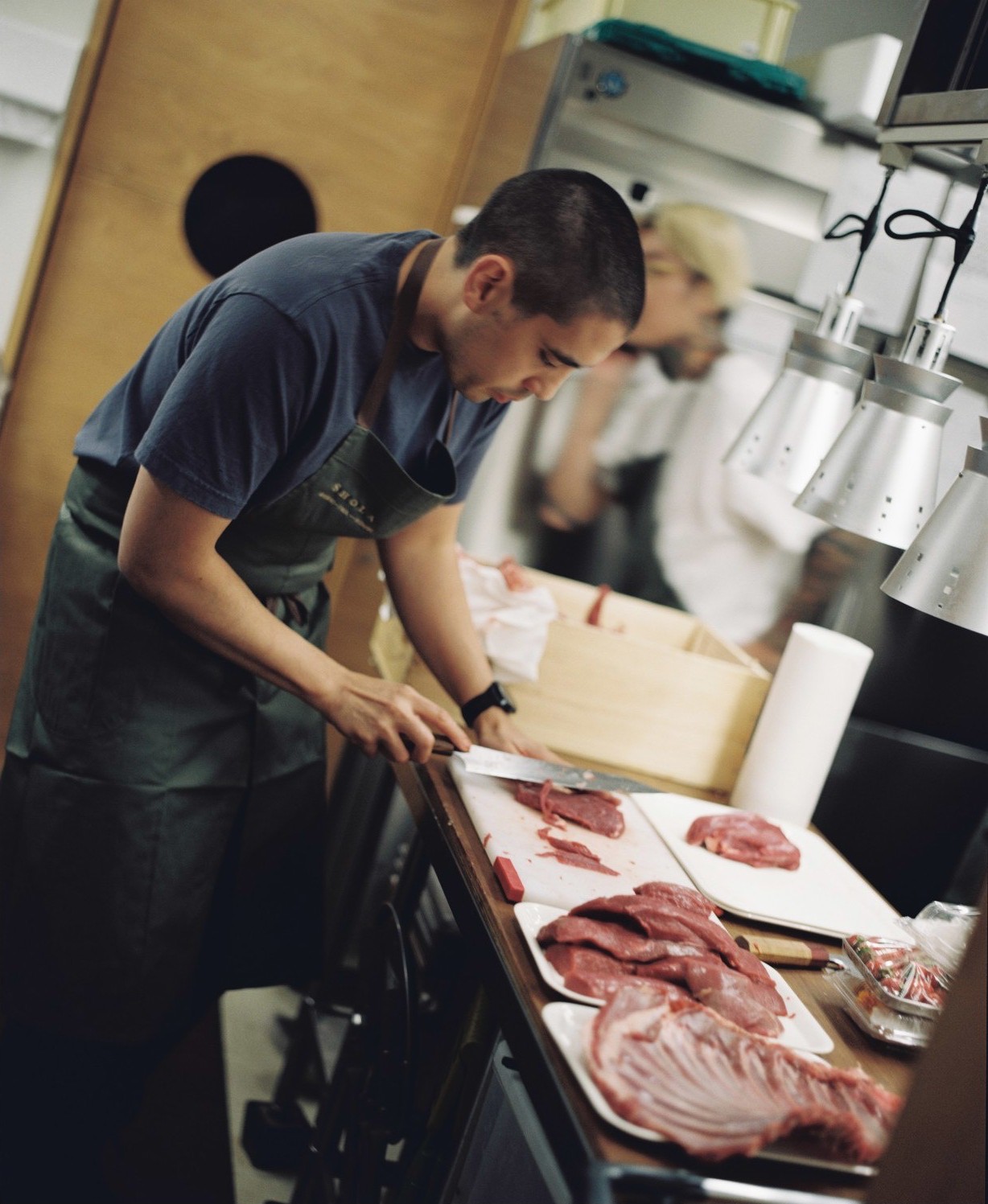
Coleman who’s based in the Shiga prefecture agreed that the organic vegetables from Duca Farm were “mind blowing”. He loved the turnip, which “almost tasted like a pear… a flavour and texture that I have never experienced before. It was a joy to experience the literal fruits of their labour”.

Barry thought it was really interesting to have bee larvae harvested from the local farm on the menu. “It’s cool to see Johanne using that in her cooking,” he remembered. For the cook-out, the Singaporean chef who’s now based in Hong Kong decided to prepare his rendition of fried chicken using local free-range Japanese chicken paired with a sambal mayo. Everyone was excited to snack on this comfort food before the mains were served. The crispy chicken shared plate space with deer sausages made by Coleman.
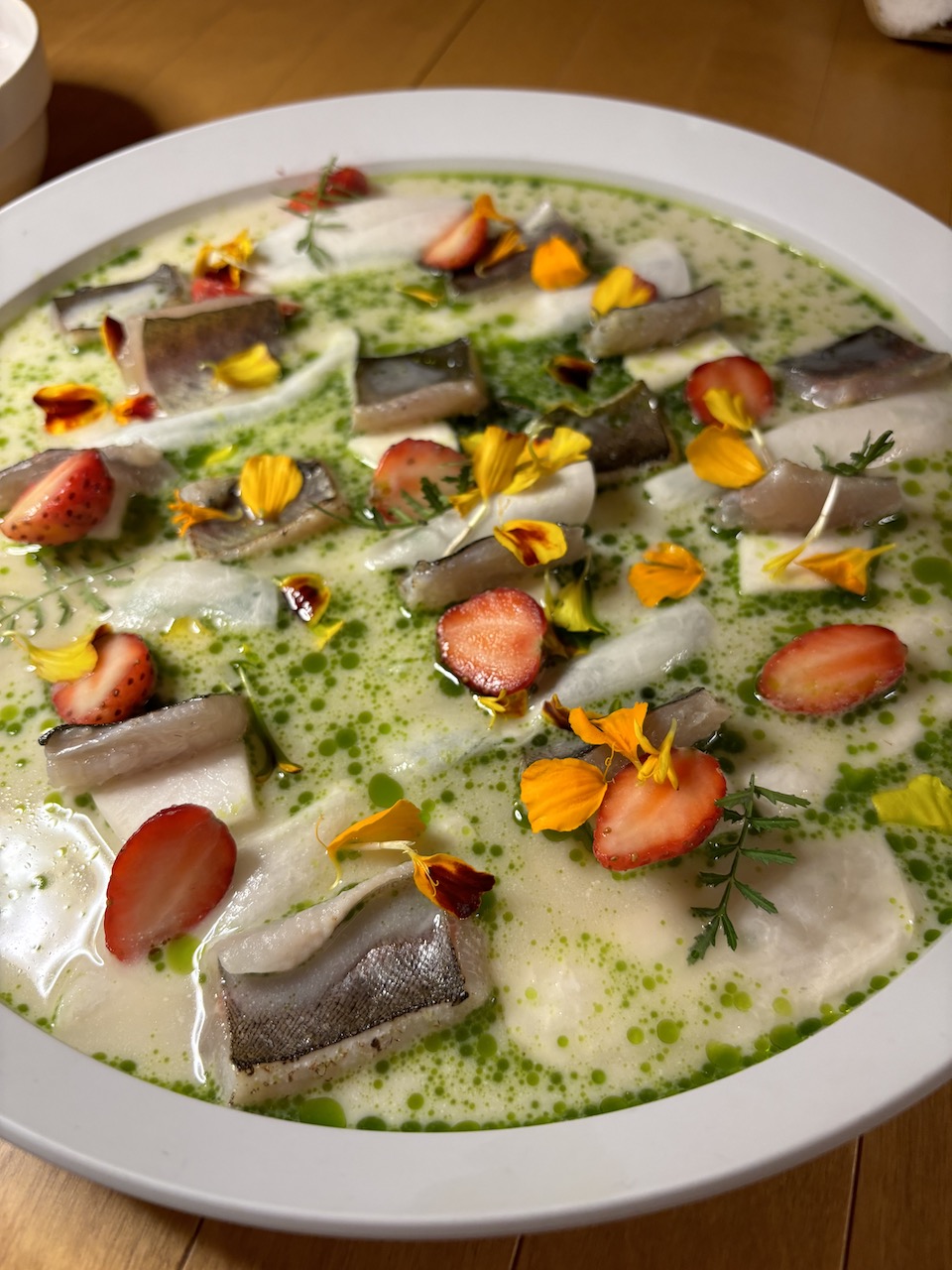
For Chef Masashi, one dish that stood out for him was the mixing of 10 different fresh herbs into freshly cooked rice. “It tasted surprisingly good. In Japan, we also sometimes mix pickles made of perilla and other vegetables with rice.”
Similarly for American-born Coleman, working with peers from the Philippines, Singapore, and Hong Kong gave him a chance to experience flavours and seasonings that aren’t so common in Japan. “Some examples include crab head sauce, spicy sambal sauce, and trout kinilaw. They all showcased regional tastes and flavours and it was super delicious,” he recalled. Ricardo also wowed everyone with a soup prepared with the intention “to weave [in] a touch of Latin America”. “It’s made with fish bones and vegetables, and finished with avocado leaves,” he said.
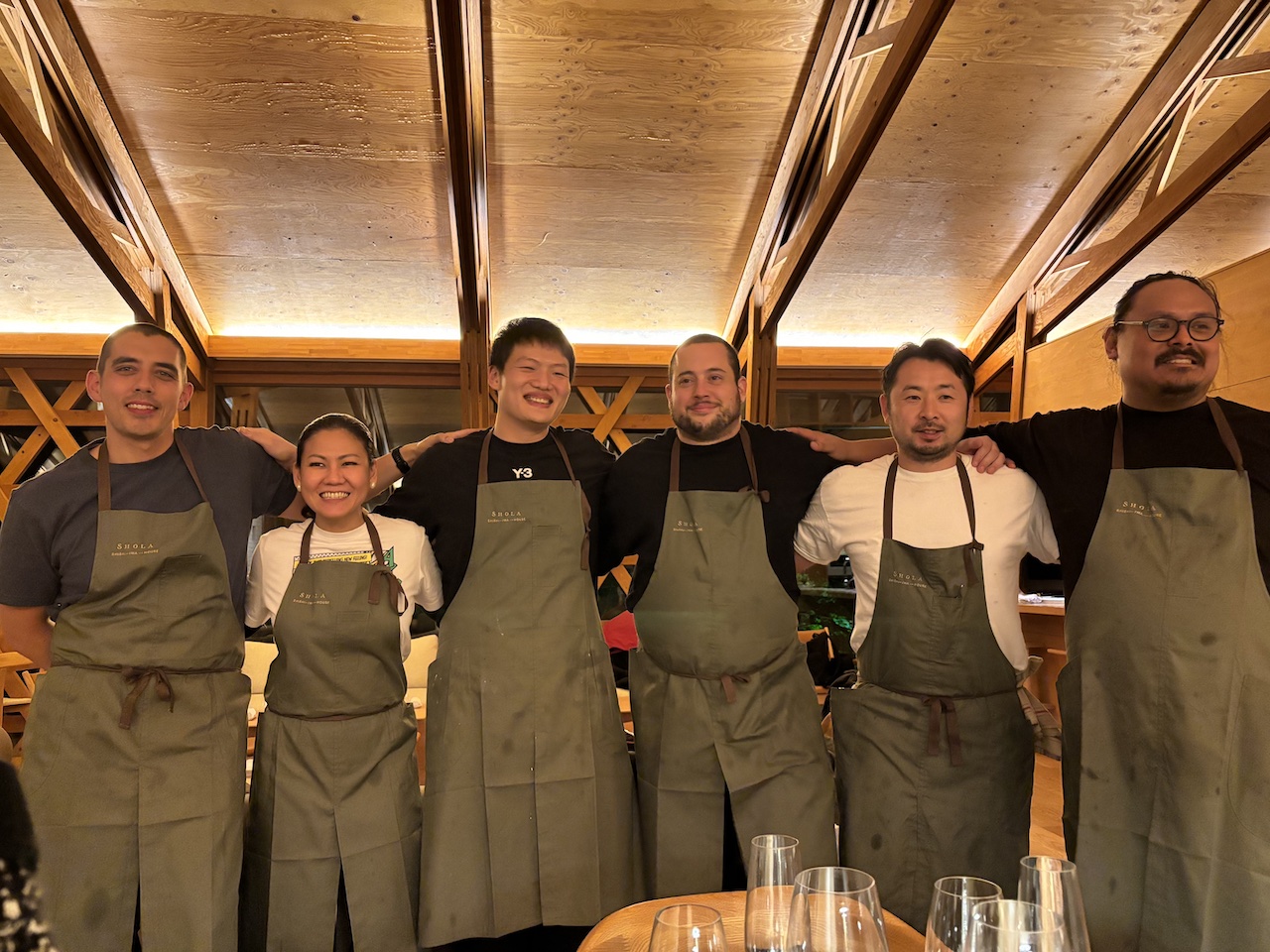
Traditional sake brewery production
The following day, SSH’s team brought the chefs to Kurosawa Sake Brewery, which has 160 years of history. The brewery is surrounded by a rich natural environment of deep forests and mountains, as well as crystal clear rivers. The current Kurosawa family is the sixth generation of sake brewers to run this traditional establishment, which still uses age-old brewing methods. The labour-intensive production creates full-bodied sake with great depth and rich flavour. Owner Takao Kurosawa welcomed everyone for an exclusive and rare visit to observe the production of the sake.
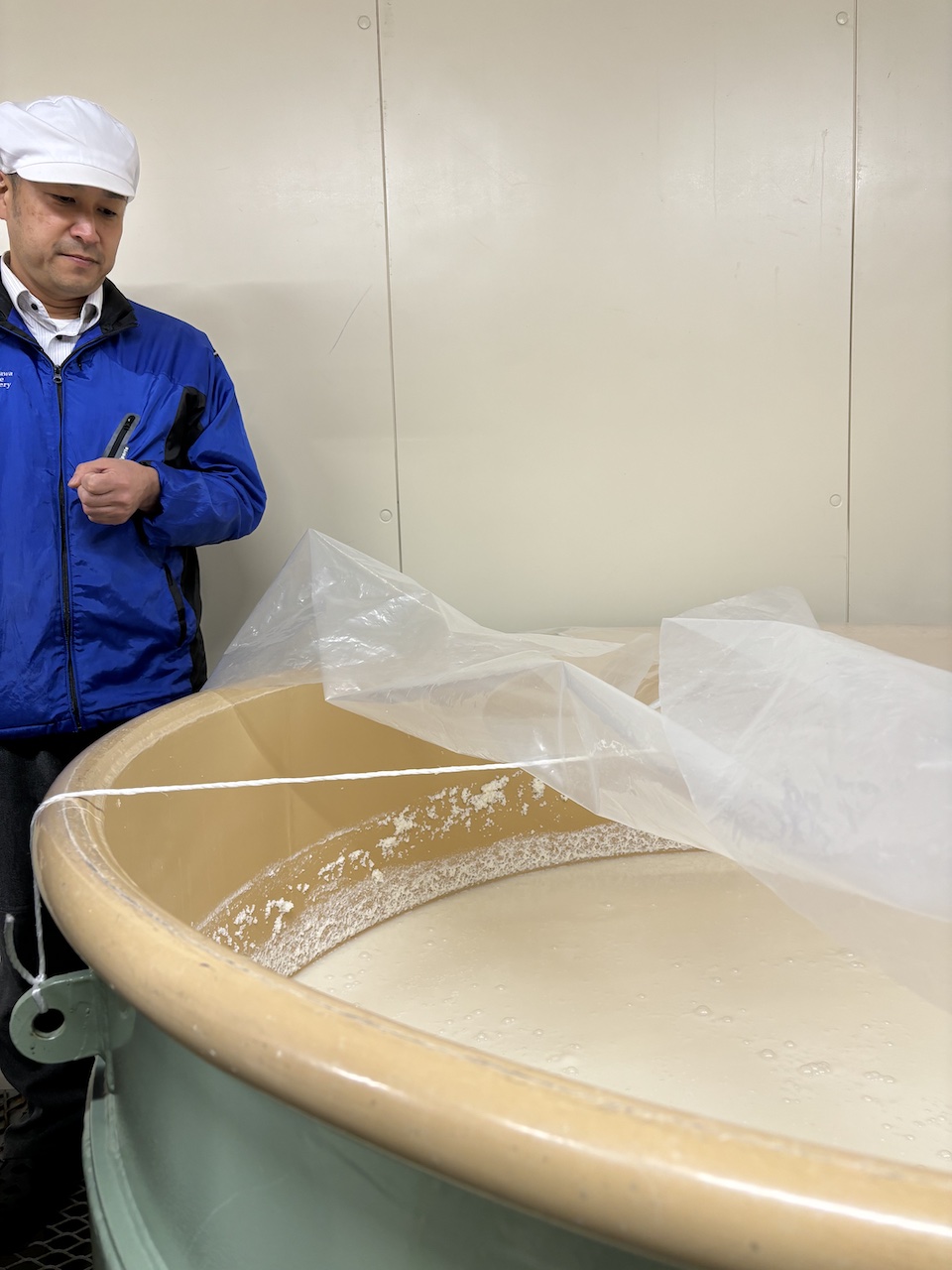
Johanne pointed out that it was her first time visiting a sake brewery. “It was enlightening to see in practice what I only knew about from theory. That sweet heady aroma of fermenting rice will forever be ingrained in my olfactory memory. The quality of the sake was top-notch, especially since they use the pristine water of Karuizawa. I’m happy to report I still have a couple of bottles that I’m saving in my fridge, which I should drink soon!”
Jordy agreed that the sake was great and the opportunity to visit the brewery gave them a better appreciation of it. “It was also very interesting to learn about their water source and how it makes a huge difference in the quality of sake that they produce.” Coleman thought that it was great to have the rare chance to see a sake brewery during the brewing season. After trying the sake, which was still in production at the brewery, Masashi said, “It was very fresh and sweet, with an aftertaste of refreshing acidity that lingers. It was a high-quality Japanese sake.”
Memories of Karuizawa
Aside from cooking, the chefs also tried local cuisine like traditional soba, which is well known in this area. Karuizawa produces top quality buckwheat, making it the perfect place to enjoy soba. The bowls of hand-made noodles were topped with nests of vegetable tempura. Jordy recalled, “Eating soba with everyone was the highlight for us. It was really simple and delicious but, clearly, with a lot of technique involved.”
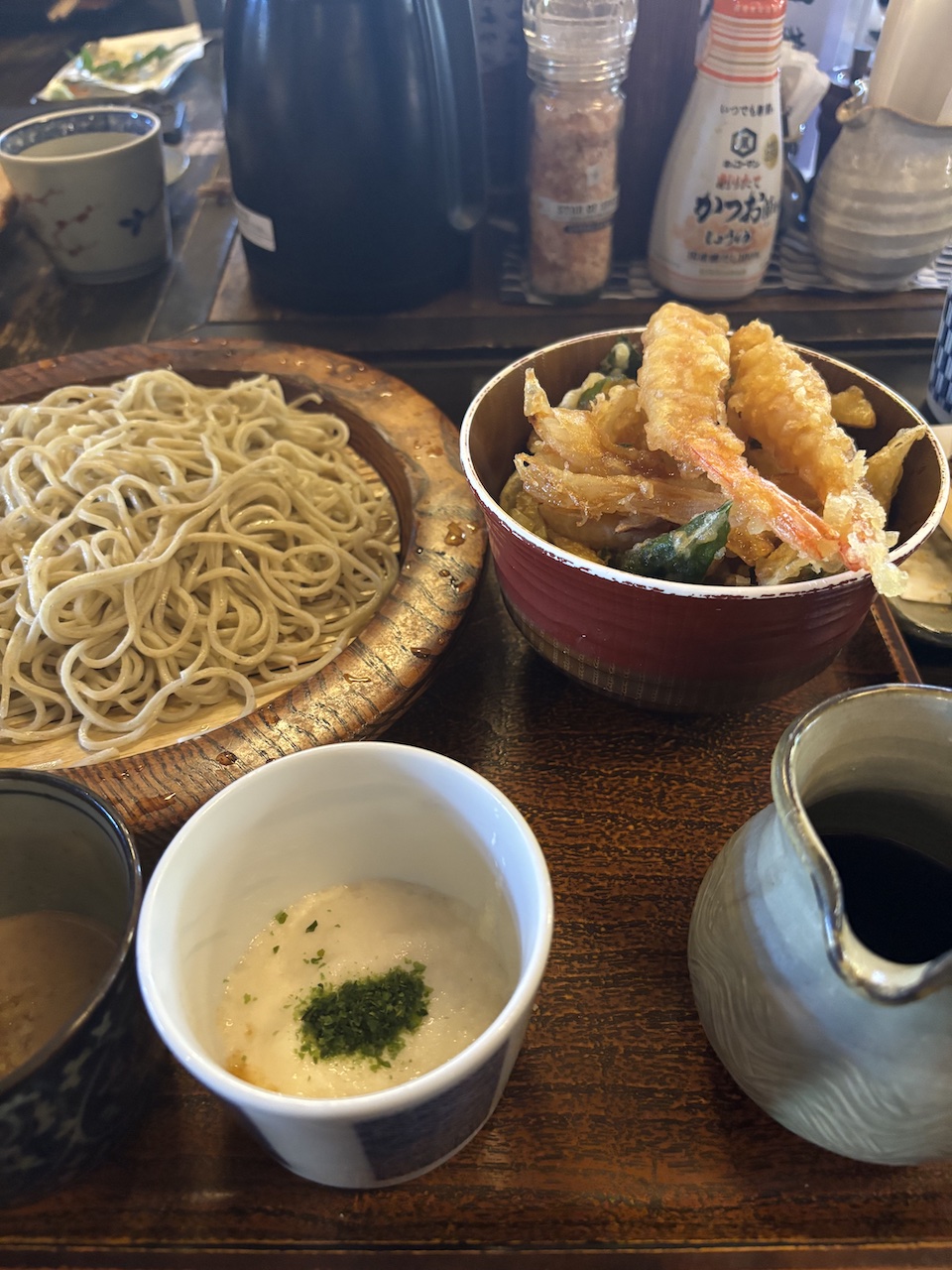
The chefs and their partners even had the chance to burn calories by going on nature hikes to nearby waterfalls. The serene area was surrounded by breath-taking autumnal foliage in shades of red, orange and yellow. “We rarely go on hikes so we even surprised ourselves with how much we enjoyed it,” said Jordy. At the end of their trip, he noted, “One idea that really stuck with us was how the surroundings and even the setting can impact the food, both in terms of quality and flavours. I think this was a sentiment that was shared by everyone there.”
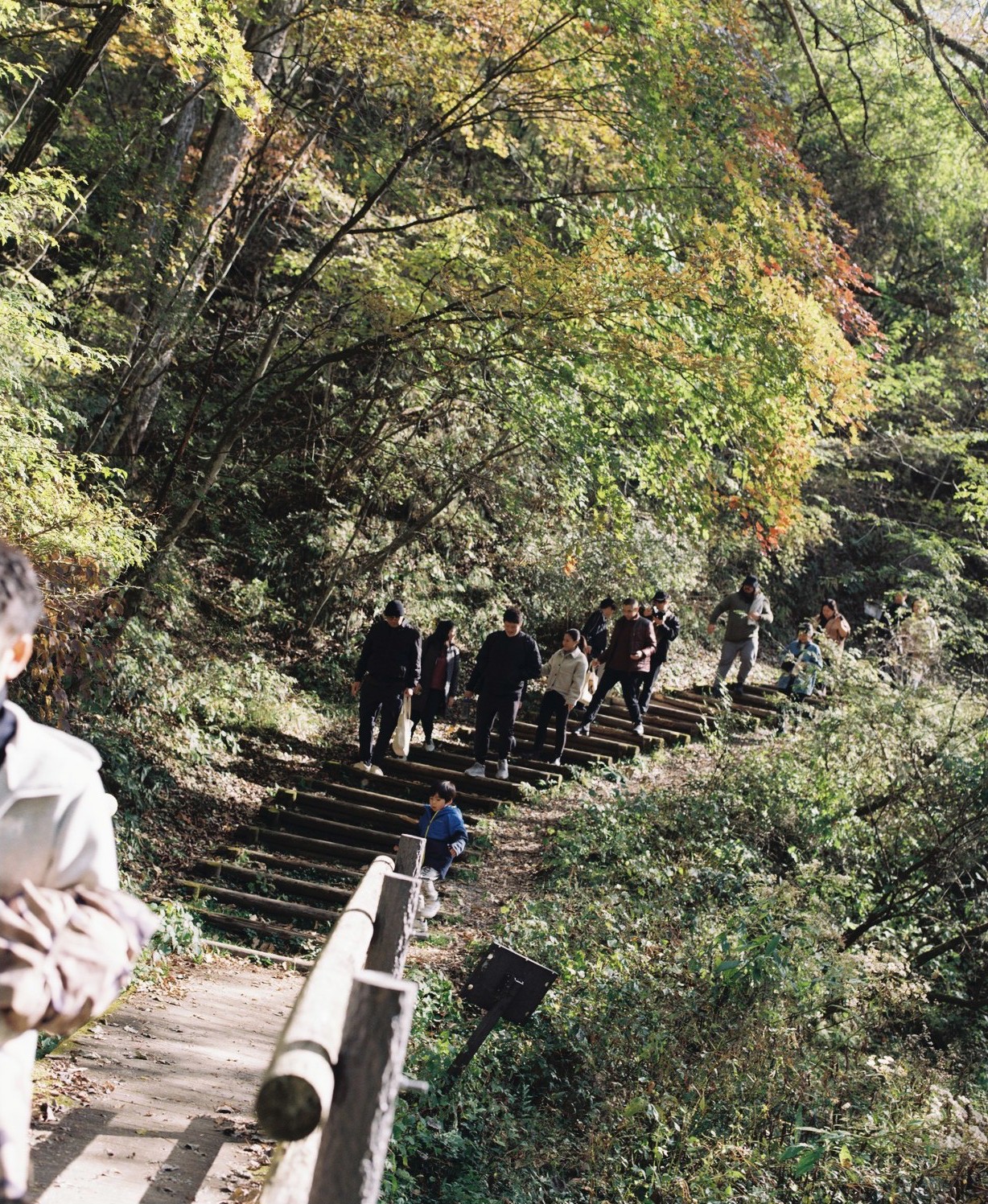
Johanne agreed that being surrounded by so much beauty, you cannot help but pause, take a step back and reflect. “I loved the surrounding environment, which made me feel much closer to nature while I was staying there. Visiting the Shiraito waterfall and the Onioshidashi volcanic park gave me a much-needed perspective. I enjoyed eating the local produce grown and made by the local artisans like the soba, iwana-no-yaki or salt-grilled char sold by side-street vendors and fished from the Kumagawa river running through Karuizawa, local wine and beer, as well as the jams from the nearby specialty shops.”
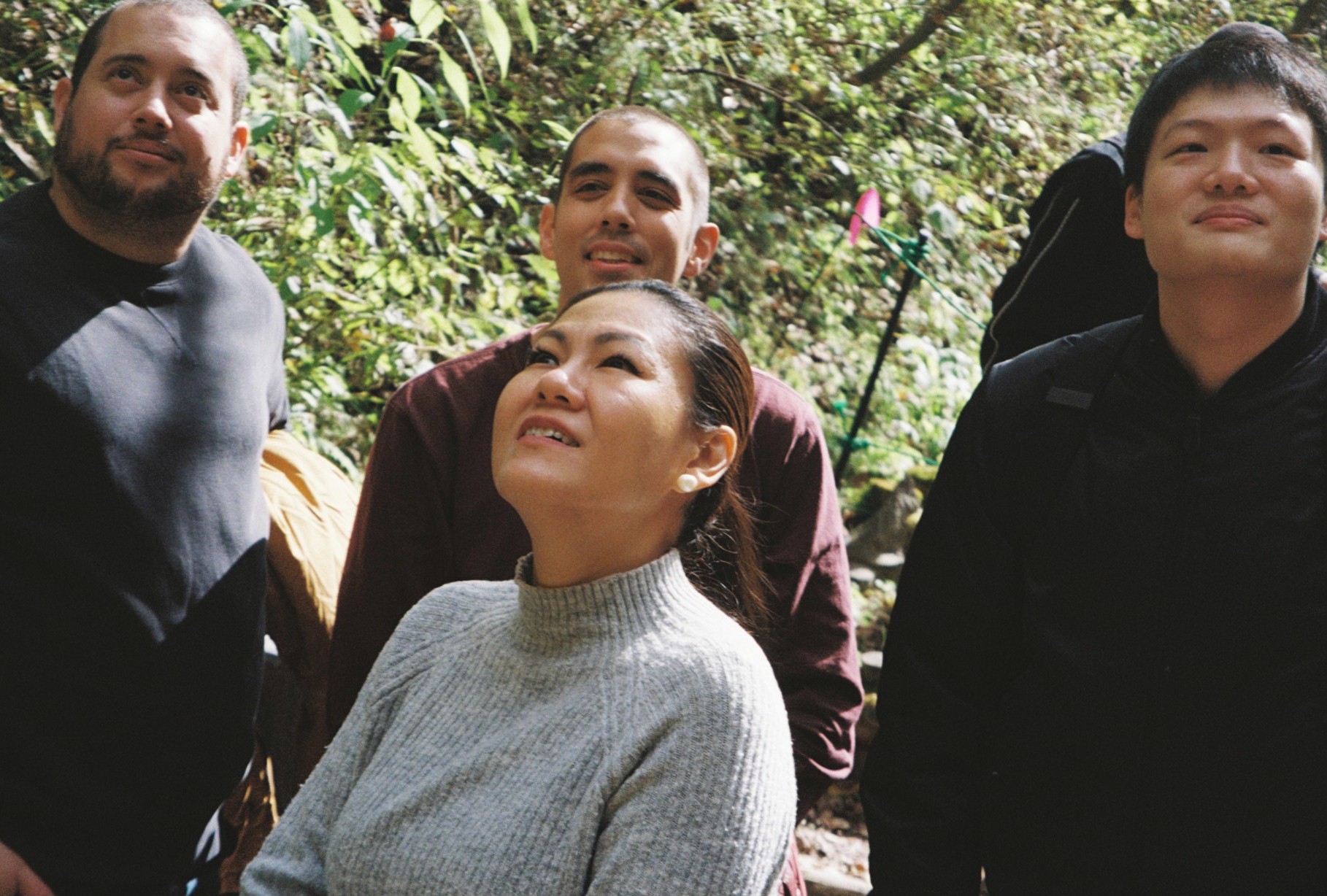
Ricardo summed up his experience: “What has stayed with me from the culinary retreat at Shishi-Iwa House was the camaraderie formed among all of us chefs. Spending time in architectural masterpieces surrounded by natural landscapes without the pressures of being in a restaurant kitchen was inspiring. By meeting the local farmers of Karuizawa, learning about their connection to nature and how that informs Shola’s approach of highlighting the natural flavour of each ingredient was special for me.” A sentiment that’s probably felt by the rest in the group. Needless to say, everyone went home with indelible memories, refreshed outlooks, and full bellies.
_____
Text by: Amy Van
Photography by: Ittetsu Matsuoka
